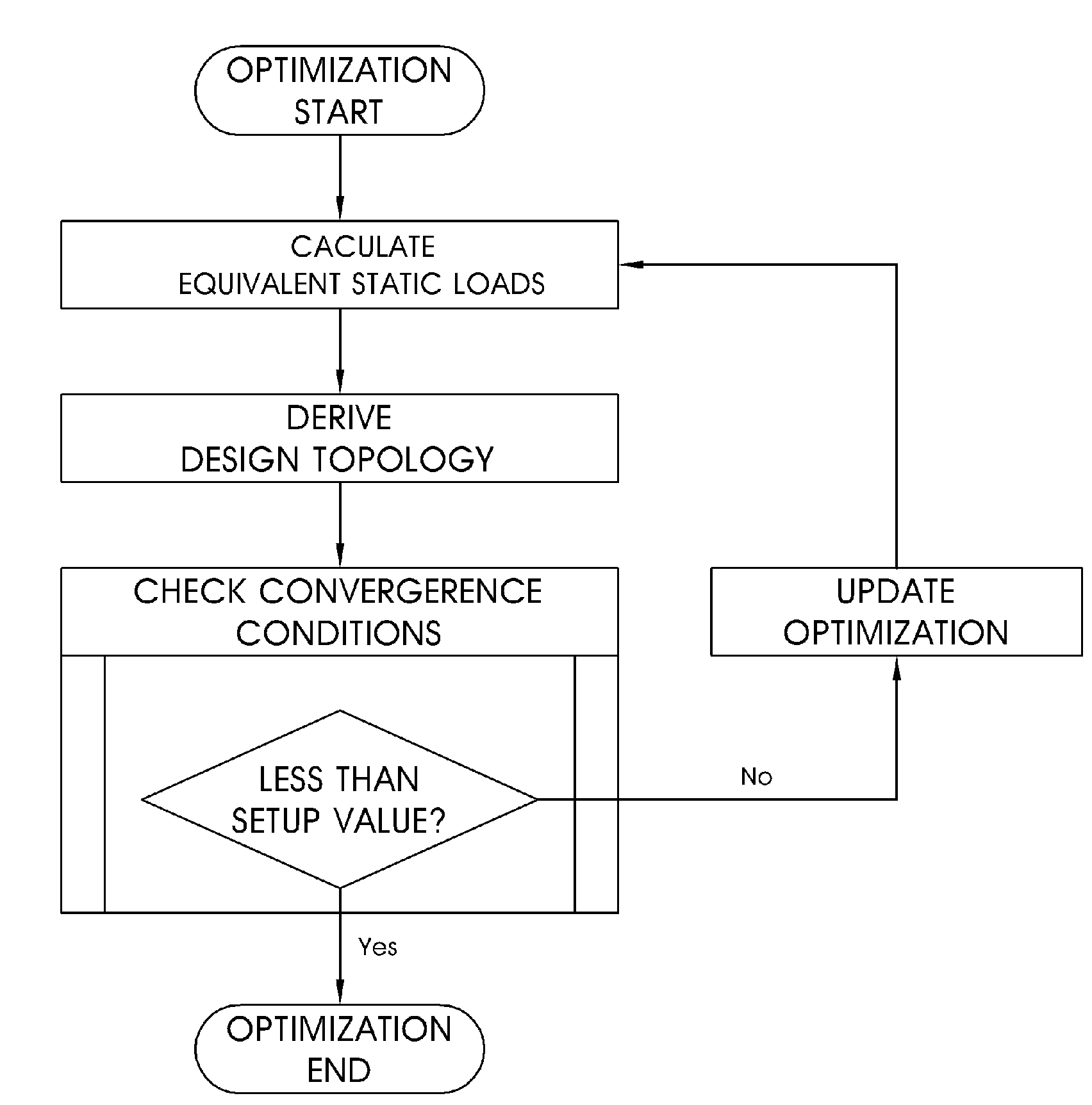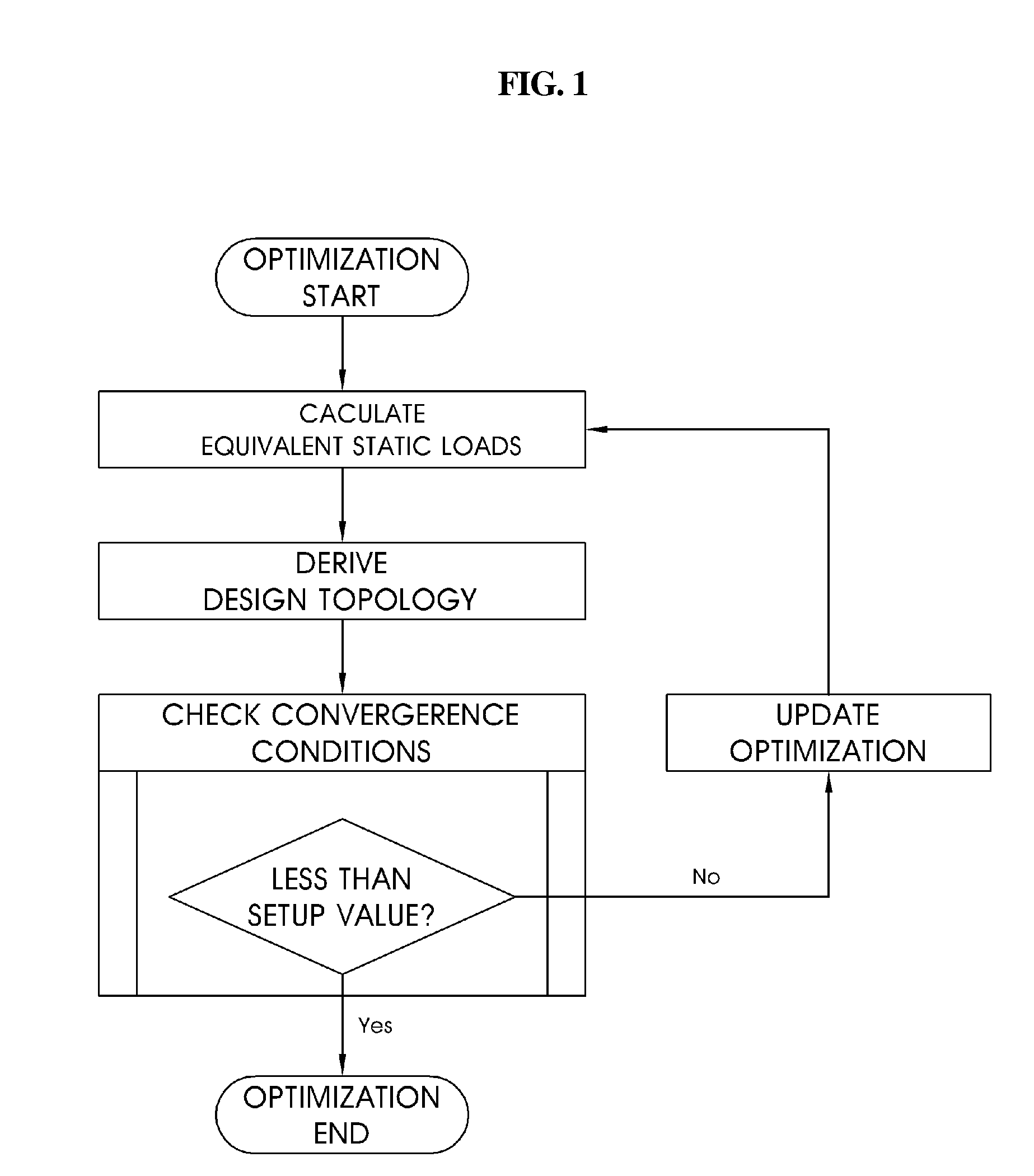Topology optimization method using equivalent static loads
a static load and topology optimization technology, applied in multi-objective optimisation, cad techniques, instruments, etc., can solve problems such as inability to obtain design, shape optimization changes shape, and restrictions on specification, and achieve accurate solutions.
- Summary
- Abstract
- Description
- Claims
- Application Information
AI Technical Summary
Benefits of technology
Problems solved by technology
Method used
Image
Examples
Embodiment Construction
[0033]Reference will now be made in greater detail to exemplary embodiments of the invention with reference to the accompanying drawings.
[0034]FIG. 1 is a flow chart illustrating a topology optimization method using equivalent static loads according to an embodiment of the present invention.
[0035]First, equivalent static loads are calculated on the basis of characteristics of a structure to be designed (step 1).
[0036]The equivalent static load refers to a load in a static linear system that generates a response identical to that represented in a dynamic system. A paper of “numerical optimization of a dynamic system using equivalent static loads” has been initially issued in 2000 by the inventors of the present invention. Afterwards, numerical and shape optimization using equivalent static loads in various systems have been issued through famous academic journals at home and abroad. However, no research has been issued in connection with topology optimization using equivalent static ...
PUM
 Login to View More
Login to View More Abstract
Description
Claims
Application Information
 Login to View More
Login to View More - R&D
- Intellectual Property
- Life Sciences
- Materials
- Tech Scout
- Unparalleled Data Quality
- Higher Quality Content
- 60% Fewer Hallucinations
Browse by: Latest US Patents, China's latest patents, Technical Efficacy Thesaurus, Application Domain, Technology Topic, Popular Technical Reports.
© 2025 PatSnap. All rights reserved.Legal|Privacy policy|Modern Slavery Act Transparency Statement|Sitemap|About US| Contact US: help@patsnap.com



